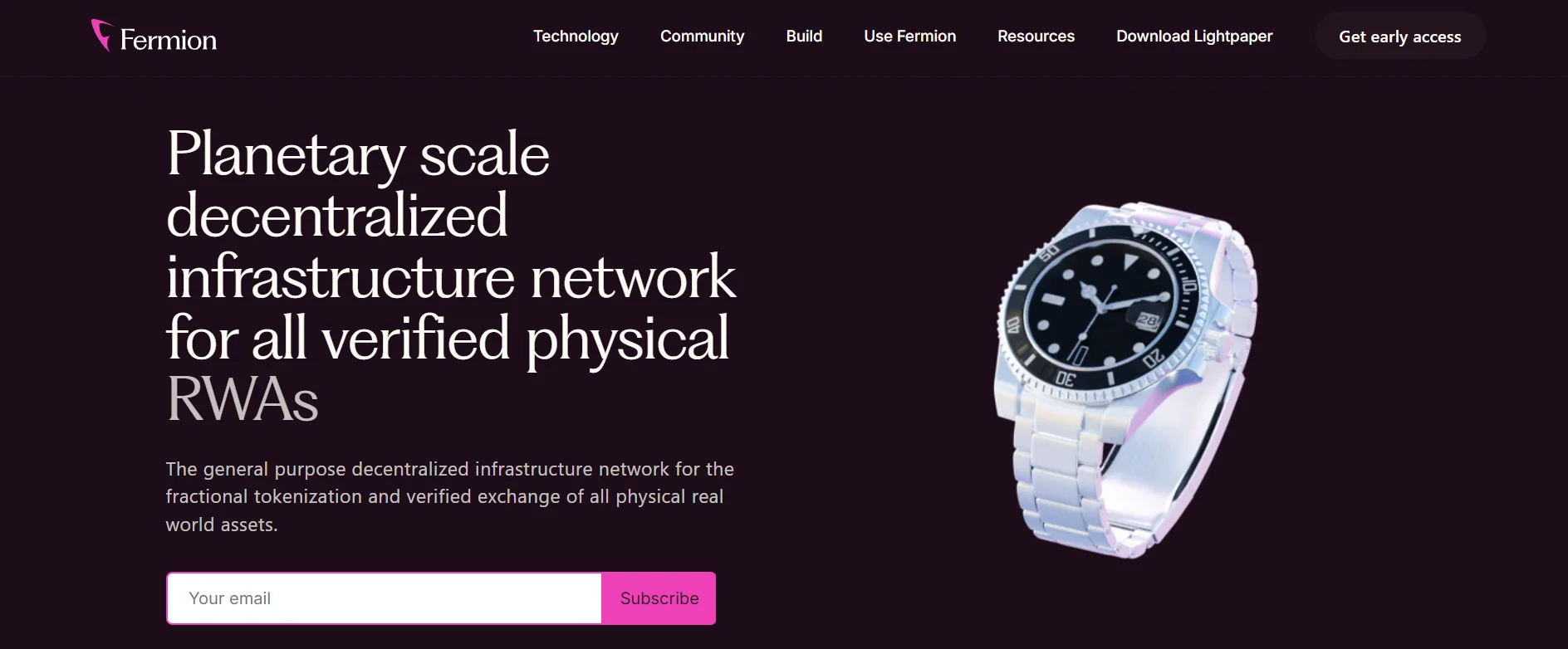Fermion Protocol offers a revolutionary solution for digitizing physical assets, providing new opportunities for investors and traders. The platform enables tokenization of real objects and stores them on the blockchain, making them more accessible and liquid. Fermion ensures data verification and protection, helping integrate real assets into the decentralized economy.
Table of Content:
- Overview of Fermion Protocol
- Technological Architecture
- Tokenomics and the Role of $FMION
- Applications and Use Cases
- Conclusion

Overview of Fermion Protocol
Fermion Protocol is a decentralized infrastructure for tokenizing physical assets, ensuring their authenticity, security, and accessibility. Fermion enables investment in high-value assets such as artwork, rare cars, and collectibles. The platform allows physical assets to be divided into tokenized shares, increasing liquidity and making them accessible to mass investors.
The project was founded by Justin Banon, the founder of Boson Protocol, and aims to integrate traditional assets into the decentralized economy. Fermion Protocol lowers barriers for private and institutional investors, offering universal solutions for asset tokenization and trading on the blockchain.
Technological Architecture
The technological architecture of Fermion Protocol is based on advanced solutions aimed at ensuring transparency, security, and accessibility of tokenized assets. The platform allows asset owners not only to tokenize their objects but also to store and trade them in a decentralized environment. This approach makes Fermion attractive for investors seeking to use real assets in digital operations. Fermion Protocol employs several advanced technologies to ensure the security of asset tokenization:
- Decentralized Infrastructure: Records asset data on the blockchain, providing a high degree of transparency.
- Asset Fractionalization: Assets are represented as ERC-20 tokens, allowing investors to purchase shares.
- Verification and Custody: Fermion enlists trusted verifiers and custodians to check authenticity and ensure asset storage.
- Integration with DeFi: Tokens can be used in decentralized financial operations.
Fermion Protocol is designed to tokenize physical assets and store them in a decentralized registry, eliminating the need for trust in third parties. Each token transaction is recorded, ensuring authenticity and reliability.
Tokenomics and the Role of $FMION
Fermion Protocol offers extensive opportunities for tokenizing various physical assets. One of the main application areas is luxury goods, such as watches, wines, cars, and artwork. The protocol not only transforms these assets into digital form but also fractionalizes them, making them accessible to a large number of investors. This opens up new opportunities for individuals who previously could not afford to invest in such items.
For example, collectible watches can be tokenized and divided into shares, allowing investors to purchase smaller parts of these items. Tokenization of wines and spirits opens up access to the market for rare and valuable collections that can be stored in warehouses until they are demanded. Artwork and cars are also becoming available to a wider range of investors through tokenization, making Fermion an attractive platform for collectors and investors worldwide.
Moreover, asset tokenization through Fermion Protocol facilitates the expansion of digital asset use in the real economy. Each tokenized asset can be used in decentralized applications, providing new opportunities for its use, such as loan collateral. This makes the platform a universal solution for integrating physical assets into the blockchain and expands its application beyond traditional financial markets.
Applications and Use Cases
Fermion Protocol is focused on tokenizing high-value assets. Examples include:
- Luxury Watches: Tokenizing watches and other luxury items, making them more accessible to a wider range of investors.
- Artwork: Tokenizing paintings and sculptures allows investors to purchase shares in artwork.
- Collectible Cars: Rare cars become accessible to mass investors, allowing partial investment.
- Spirits: Unique collections can be tokenized and divided into shares.
These assets can be used in various DeFi applications, such as loan collateralization. Fermion Protocol offers investors a safe way to participate in global financial operations while ensuring transparency and data protection.
Conclusion
Fermion Protocol is a powerful tool for physical asset tokenization. The platform allows investors to fully leverage the capabilities of blockchain, providing access to liquidity and global markets. Fermion simplifies the process of ownership and trading of real assets, offering innovative solutions for data storage and verification. With a well-thought-out architecture and flexible options, Fermion Protocol is poised to lead among decentralized platforms.





